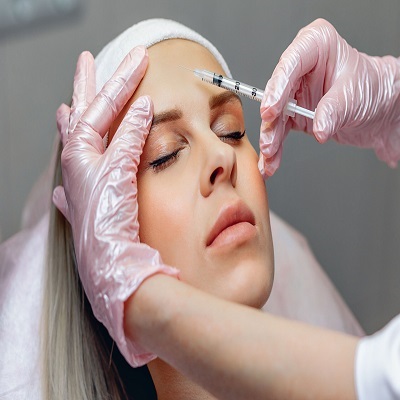Botox has become a widely accepted solution for addressing signs of aging, such as fine lines and dynamic wrinkles. Its minimally invasive nature, quick application, and effective results have contributed to its popularity among both men and women. However, while Botox can deliver remarkable aesthetic improvements, it is not suitable for everyone. Determining whether someone is a good candidate involves careful evaluation of various medical, physical, and aesthetic factors. The growing demand for Botox in Islamabad highlights the importance of understanding candidacy to ensure both safety and effectiveness in treatment outcomes.
Understanding What Botox Does
Botox is a purified neurotoxin derived from Clostridium botulinum. When injected into specific facial muscles, it temporarily blocks nerve signals that cause muscle contraction. This effect helps relax the treated muscles and smooth out wrinkles caused by repetitive expressions, such as frowning or squinting. The treatment is particularly effective for dynamic wrinkles like crow’s feet, forehead lines, and glabellar (frown) lines.
However, Botox does not fill deep-set wrinkles or improve skin texture—it only relaxes muscle activity. This limitation underscores the importance of a thorough consultation to assess whether Botox alone can meet the patient’s goals or whether combination treatments may be needed.
Key Qualities of a Good Candidate for Botox
1. Presence of Dynamic Wrinkles
The ideal candidate for Botox is someone experiencing dynamic wrinkles, which are lines that appear during facial movements and are caused by repetitive muscle contractions. Common areas include:
-
Forehead lines from raising the eyebrows
-
Frown lines between the brows
-
Crow’s feet around the eyes
If the wrinkles are visible only when making facial expressions and disappear at rest, Botox is likely to be highly effective.
2. In Good Physical Health
A good candidate must be in generally good health, with no underlying neuromuscular disorders. Conditions such as myasthenia gravis or Lambert-Eaton syndrome can interfere with Botox’s mechanism and increase the risk of complications. Pregnant or breastfeeding individuals are also advised to delay Botox treatments as a precaution, even though no definitive risks have been proven.
3. Realistic Expectations
One of the most important psychological criteria is having realistic expectations. Botox offers temporary results that gradually fade over three to five months. It does not offer permanent changes, nor does it completely eliminate deep static wrinkles or sagging skin. Ideal candidates understand these limitations and are seeking subtle rejuvenation, not transformation.
4. Between Ages 25 and 65
While Botox is FDA-approved for individuals over the age of 18, most patients fall within the 25–65 age group. Younger patients often pursue Botox as a preventive measure, stopping wrinkles before they become deep or permanent. Older patients, on the other hand, may use Botox to soften existing lines and complement other treatments like fillers or laser therapy.
5. No History of Allergic Reactions to Botox or Its Ingredients
Although rare, allergic reactions to Botox or its components can occur. Candidates should disclose any prior history of allergic responses to botulinum toxin or other cosmetic injectables. They should also mention any history of skin sensitivity or hypersensitivity reactions to medications or topical products.
6. Good Skin Elasticity
Even though Botox targets the muscles, the overlying skin must retain some elasticity for optimal results. Patients with extremely lax or aged skin might not benefit significantly from Botox alone and may need a more comprehensive treatment plan, possibly involving dermal fillers or surgical procedures.
7. Not Currently Taking Certain Medications
Some medications can increase the likelihood of bruising or interact negatively with Botox. These include:
-
Blood thinners like aspirin, warfarin, or clopidogrel
-
Anti-inflammatory drugs (NSAIDs)
-
Muscle relaxants
-
Certain antibiotics (especially aminoglycosides)
It’s essential for candidates to disclose all medications and supplements they’re taking during the consultation process.
8. Avoiding Alcohol and Tobacco Use Around the Treatment Time
While not an absolute exclusion, alcohol and tobacco use can negatively impact healing and increase the likelihood of side effects such as bruising. Candidates are generally advised to avoid these substances for at least 24–48 hours before and after the procedure.
Who May Not Be a Suitable Candidate?
Not everyone qualifies for Botox treatment. The following groups are typically advised against undergoing the procedure:
-
Pregnant or breastfeeding individuals
-
People with neuromuscular disorders such as ALS, myasthenia gravis, or multiple sclerosis
-
Individuals with skin infections or rashes near the injection site
-
People with unrealistic cosmetic expectations
-
Individuals allergic to any components of the Botox formula
In such cases, alternative treatments may be more appropriate. A qualified practitioner can guide patients toward suitable options based on their health profile and aesthetic concerns.
The Role of a Professional Consultation
A thorough consultation is an essential part of determining whether someone is a good candidate for Botox. During this session, the practitioner:
-
Reviews the patient’s medical history
-
Examines the facial structure and areas of concern
-
Explains the benefits and limitations of Botox
-
Discusses possible side effects and post-treatment care
-
Provides a tailored treatment plan based on the patient’s goals
This comprehensive approach ensures both safety and satisfaction with the results.
Psychological Readiness and Motivation
Cosmetic procedures, even non-invasive ones, should be pursued for the right reasons. A good candidate is motivated by personal aesthetic goals and not influenced by external pressure or unrealistic beauty standards. Emotional readiness contributes significantly to overall satisfaction after treatment.
Combining Botox with Other Treatments
Some candidates may benefit more from a combined approach. For example, while Botox effectively smooths dynamic wrinkles, dermal fillers may be better for volume loss or deeper static lines. Skin resurfacing treatments like laser therapy or chemical peels can also enhance skin tone and texture, providing a more comprehensive rejuvenation effect.
Discussing these possibilities during the consultation helps set realistic expectations and provides a broader range of solutions tailored to the individual’s needs.
Conclusion
Botox is a powerful tool in the field of aesthetic medicine, but its effectiveness hinges on appropriate patient selection. A good candidate is typically healthy, informed, and has dynamic wrinkles that respond well to muscle relaxation. Assessing physical condition, expectations, skin quality, and medical history is essential in ensuring optimal outcomes. For individuals seeking expert evaluation and professional administration of Botox, the SKN Cosmetics clinic in Islamabad offers personalized care, advanced techniques, and a commitment to patient satisfaction.



